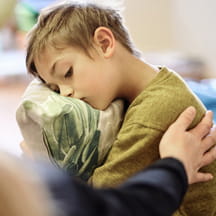According to the Substance Abuse and Mental Health Services Administration (SAMHSA), here's how the phases of disastrous events affect those involved:
- Pre-disaster phase. Disasters with no warning can cause feelings of vulnerability and a sense of loss of control or the loss of the ability to protect yourself and your family. Disasters with warning can cause guilt or self-blame for failure to heed warnings. This phase may last hours, or even minutes, such as during a terrorist attack, or it may be several months, such as during hurricane season.
- Impact phase. Slow, low-threat disasters have psychological effects that are different from rapid, dangerous disasters. Reactions range from shock to panic. Initial confusion and disbelief are followed by a focus on self-preservation and family protection. This is usually the shortest phase.
- Heroic phase. Characterized by a high level of activity with a low level of productivity. There is a sense of altruism, and community members exhibit adrenaline-induced rescue behavior. This phase often passes quickly.
- Honeymoon phase. A dramatic shift in emotion. Disaster assistance is readily available. Community bonding occurs. Optimism exists that everything will return to normal quickly. As a result, numerous opportunities are available for providers and organizations to establish and build rapport with affected people and groups, and for them to build relationships with stakeholders. This phase may last a few weeks.
- Disillusionment phase. Communities and individuals realize the limits of disaster assistance. Optimism turns to discouragement and stress continues to take a toll. Negative reactions, such as physical exhaustion or substance use, begin to surface. The gap between need and assistance leads to feelings of abandonment. This phase can last months and even years. It is extended by trigger events, such as the anniversary of the disaster.
- Reconstruction phase. Characterized by an overall feeling of recovery. Individuals and communities begin to assume responsibility for rebuilding their lives, and people adjust to a new normal while continuing to grieve losses. This phase often begins around the anniversary of the disaster and may continue beyond. Following catastrophic events, the reconstruction phase may last for years.


